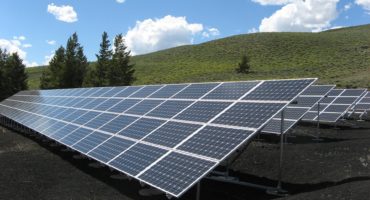
Solar Shingles Vs. Solar Panels: What’s Best For You
Solar Energy has become a standard technology rather than just a trend in the United States. As we use more power as a nation, the government is trying to incentivize the switch to solar. Competitive market forces are now driving down prices while panel efficiencies continue to improve. Solar Panels VS. Solar Shingles is a common question asked by the prospective consumer.
Solar Panels
Solar panels are rectangular in shape with a black aluminum frame have become the standard type of panel in NYC and Long Island. These rectangular panels can be found all over commercial and residential roof tops. They come in 60-cell or 72-cell varieties to support the various geometric shapes of roofs. The average panel rating is 300 watts, but certain panels can reach up to 360-400 Watts. The solar panels you see on roofs today are essentially the same technology which was formed in the 1950’s. The panels today are more efficient due to advancement in the cultivation and treatment of the silicon wafer cells used as well as manufacturing techniques. In fact, there are solar panels which have continually functioned for 30-40 years to this day albeit producing at a lower capacity. Solar panels are mounted in a variety of ways including roof-mount, ground-mount, and tracking systems which follow the sun for enhanced performance. On a roof mounted system, the panels are installed 3-5 inches over the surface of the roof creating a cooling effect on the structure below. Attic temperatures can decrease by 50% since the heat of the sun’s rays are being absorbed by the solar panels and are not transferring to the roof. The ultimate advantage of solar panels over solar shingles (besides the fact that shingles will cost twice as much) is less points of failure. The average solar pv system has 20-30 panels for residential. This translates to between 20-30 points of failure. When installing solar shingles, there could be hundreds to thousands of points of failure in a system. Each traditional panel will have its own tracking point which sends data to an app. It is impossible to track hundreds or thousands of shingles individually the way you would 20-30 solar panels.
Solar Roof Tiles/Shingles
Solar roof tiles or solar shingles were first formed in 2005 and are designed to look like traditional asphalt shingles. They are much smaller than solar panels and will produce much less power per square foot in most cases. The technology used in most solar shingles is thin film which is also a much less efficient technology than traditional solar modules. Recent advancement in solar shingles have come much closer to traditional solar power efficiency but are very far away from achieving the economic cost efficiency. Since solar shingles will replace your traditional asphalt shingles, they cannot be installed on top of your current roof system like traditional panels (retrofit). As such, solar shingles can only be installed at the time that a new roof is being fully renovated or newly installed. Solar shingles are designed to work like a traditional roofing system blocking the elements of wind and rain but since the technology is new, the shingles for roofing purposes have not been tested to the same extent as asphalt shingles. Time will tell. The installation of solar shingles requires more expensive labor which is skilled in electrical and roofing. One mistake on a shingle wired improperly (out of hundreds or thousands) can impact the entire system. In addition, since the shingles are essentially the roof itself, the shingles will be the absorption point of the suns heat and UV rays. The home will not be insulated from the heat like traditional solar panels which block the heat and thus, solar shingles require more ventilation to prevent heat buildup. Lastly, solar shingles cannot be adjusted for tilt or orientation.
Both technologies have their purpose and markets they fulfill. Complying with local and federal authorities is a requirement so make sure you check your locations code requirements. Solar Panels and Shingles come with warranties but only if they are installed to manufacturer specifications. Make sure you review the warranty and installation manual with your installer. Before you make the investment in solar, have a full understanding for which rebates and tax credits you qualify for so that your financial savings could be fully ascertained.
Contact Grid City Electric For Full Service Commercial Solar Panels/Shingles Solutions As Well As Residential Home Solar Services.
Grid City Electric 2047 Nameoke Ave, Queens NY 718.785.9243 gridcitysolar.com
in Solar Panels

